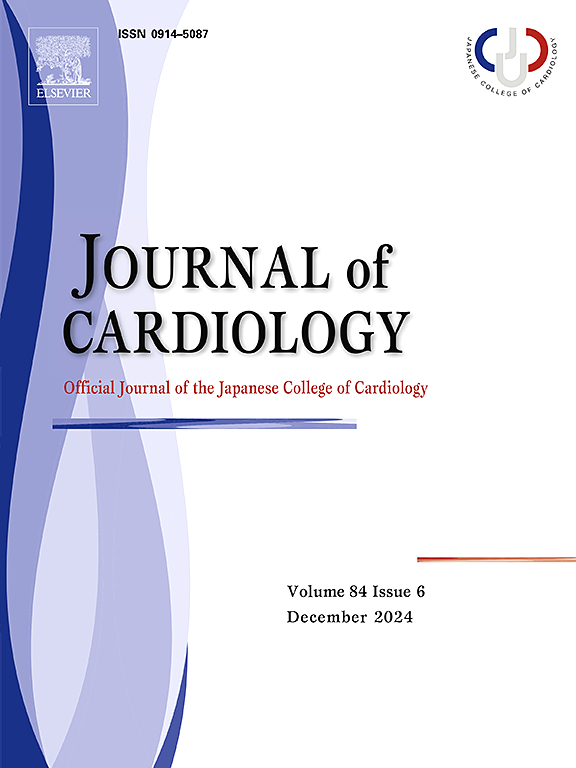无铅心脏再同步化治疗的有效性和安全性:一项最新的荟萃分析。
IF 2.5
3区 医学
Q2 CARDIAC & CARDIOVASCULAR SYSTEMS
引用次数: 0
摘要
背景:WiSE心脏再同步化治疗(CRT)系统(EBR Systems Inc., Sunnyvale, CA, USA)是一项创新技术,包括在左心室心内膜植入电极,作为传统CRT的替代方案,用于有症状的心力衰竭和射血分数(EF)降低的患者,尽管有最佳的医学治疗。本研究的目的是评估Wise CRT的疗效。方法:检索自成立至2024年11月的两个电子数据库。主要结局定义为左室(LV) EF(%)和QRS(毫秒)从基线到术后6 个月的平均差值(MD)。结果:我们的分析包括6项研究(n = 281例患者)。进行荟萃分析,主要终点为基线LVEF和6个月随访之间的MD, b)基线QRS和6个月随访之间的MD。LVEF平均增加5.78 % (MD增加5.78 %;可信区间4.37 - -7.19;p 结论:对于无法植入常规CRT或治疗不理想的高危患者,WiSE CRT显示出令人印象深刻的心电图和超声心动图反应。本文章由计算机程序翻译,如有差异,请以英文原文为准。

Efficacy and safety of leadless cardiac resynchronization therapy: An updated meta-analysis
Background
The WiSE cardiac resynchronization therapy (CRT) system (EBR Systems Inc., Sunnyvale, CA, USA) is an innovative technique consisting of an electrode implanted in the endocardium of the left ventricle as an alternative to the conventional CRT for symptomatic patients with heart failure and reduced ejection fraction (EF) despite optimal medical treatment. The objective of this study was to evaluate the efficacy of the Wise CRT.
Methods
We searched two electronic databases from inception until November 2024.The primary outcomes were defined as the mean difference (MD) of left ventricular (LV) EF (%) and QRS (milliseconds) from baseline to 6 months post-procedure.
Results
Our analysis included six studies (n = 281 patients). A meta-analysis was performed with the primary endpoints being the MD between baseline LVEF and 6-month follow-up and b) the MD between baseline QRS and 6-month follow-up. There was a mean increase in LVEF of 5.78 % (MD 5.78 %; CI 4.37–7.19; p < 0.01) and a mean reduction in QRS duration of 37.08 ms (MD −37.08 ms; CI −45.72 to −28.44; p < 0.01).
Conclusion
The WiSE CRT showed impressive electrocardiographic and echocardiographic responses in high-risk patients for whom conventional CRT implantation was impossible or resulted in suboptimal treatment.
求助全文
通过发布文献求助,成功后即可免费获取论文全文。
去求助
来源期刊

Journal of cardiology
CARDIAC & CARDIOVASCULAR SYSTEMS-
CiteScore
4.90
自引率
8.00%
发文量
202
审稿时长
29 days
期刊介绍:
The official journal of the Japanese College of Cardiology is an international, English language, peer-reviewed journal publishing the latest findings in cardiovascular medicine. Journal of Cardiology (JC) aims to publish the highest-quality material covering original basic and clinical research on all aspects of cardiovascular disease. Topics covered include ischemic heart disease, cardiomyopathy, valvular heart disease, vascular disease, hypertension, arrhythmia, congenital heart disease, pharmacological and non-pharmacological treatment, new diagnostic techniques, and cardiovascular imaging. JC also publishes a selection of review articles, clinical trials, short communications, and important messages and letters to the editor.
 求助内容:
求助内容: 应助结果提醒方式:
应助结果提醒方式:


